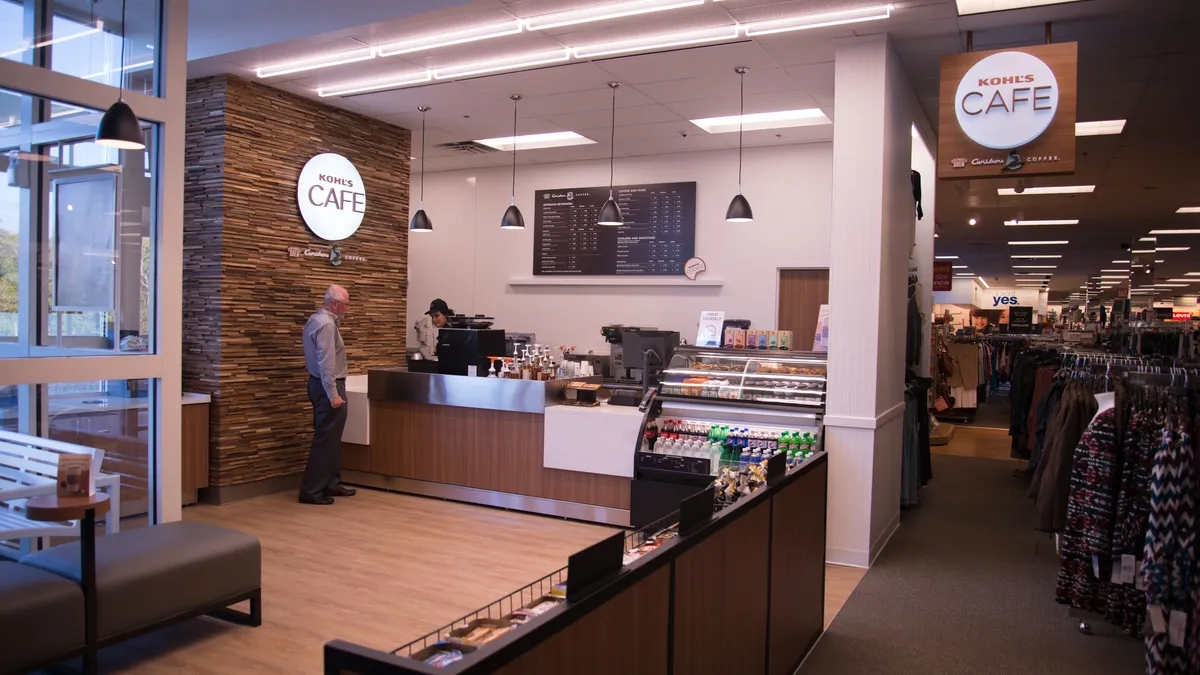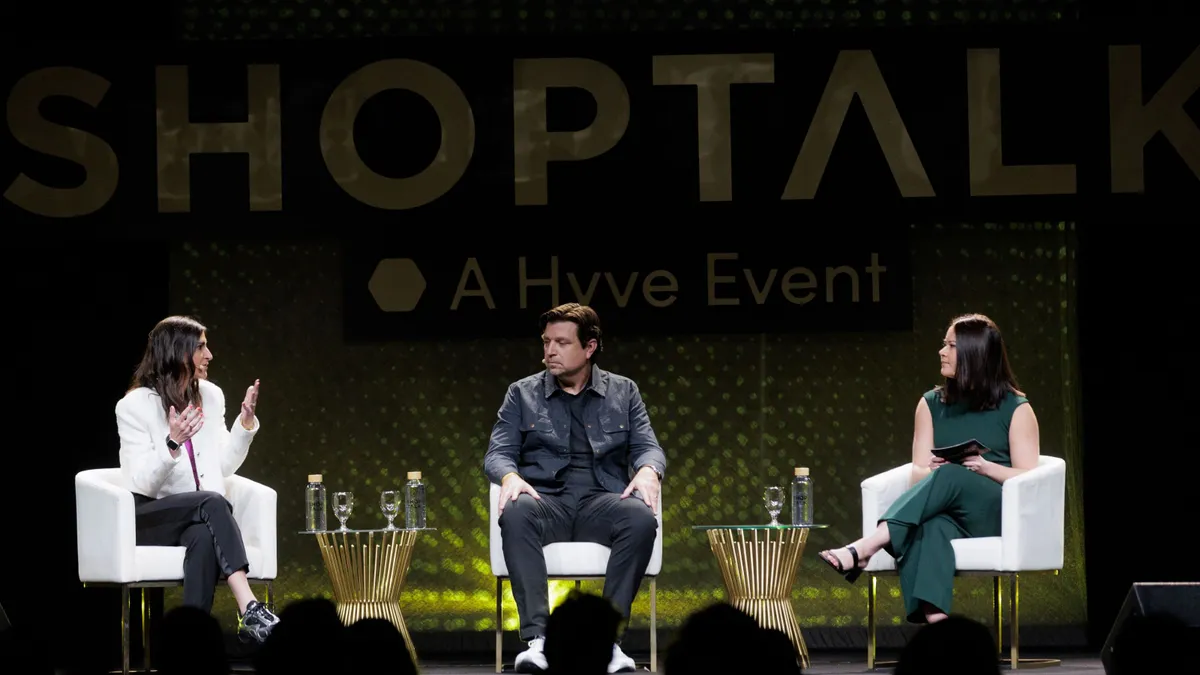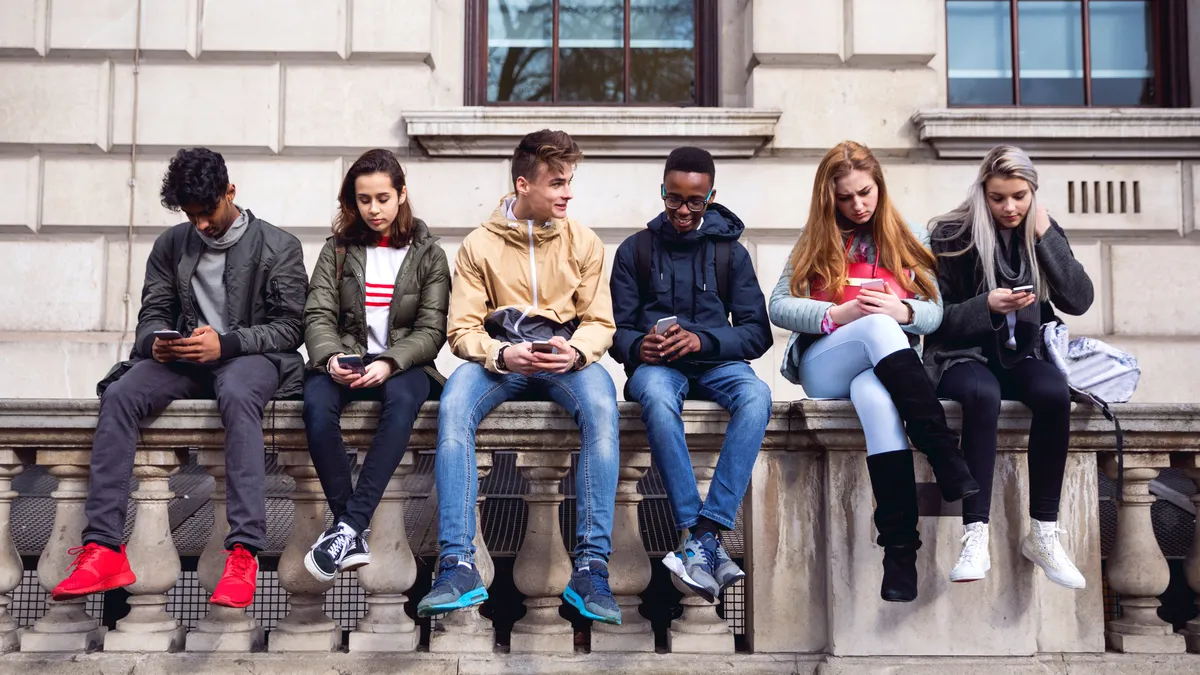Retailers are betting that the way to shoppers’ hearts is through their stomachs.
Consumer store visits in the U.S. have been on a decline for nearly a decade. During a single shopping excursion in 2007, consumers visited an average of 4.5 stores; that number dropped to between 3 and 3.5 stores per trip last year, according to retail analytics firm ShopperTrak.
And even when shoppers are in the aisles these days, their trips tend to be more purposeful. That’s because consumers who have researched products online often know precisely what they want before leaving home, resulting in fewer impulse buys.
Merchants from Target and Kohl’s to Urban Outfitters are testing food concepts like cafes and upscale restaurants to spice up their stores amid declining foot traffic as online shopping eats into brick-and-mortar sales. The idea is to get shoppers to linger longer after their stomachs are full or caffeine fix sedated, and in theory, ring up more at the cash register.
Experiential retailing
This food push reflects retailers’ broader efforts to replace lost business by crafting experiential, immersive and communal shopping environments with everything from hair salons and comfy Internet lounges to yoga classes (Lululemon) and video-projected fashion shows (Burberry) that can only be indulged in store.
“Retailers are trying to provide experiences that cannot be duplicated online,” Bill Martin, founder of ShopperTrak, told Retail Dive. “Offering prepared food in-store allows a shopper to combine two activities into one.”
But non-food retailers carrying food is nothing new, he said, “when we think back to the Walnut Room at Macy's in Chicago, or think back to the days of the soda fountain in the ‘five-and-dime store’.”
Brewing a coffee buzz in hopes they’ll linger
Retailers are banking on the premise that coffee and food pick-me-ups will refuel consumers to prolong their shopping trips.
Kohl’s, with weak sales over the past few years, is testing Kohl’s Cafés at its Menomonee Falls and Delafield, Wis. locations, which is part of its “Greatness Agenda” revival strategy, Jon Grosso, Kohl’s executive vice president and director of stores, told Retail Dive.
The strategy nudges Kohl’s executives to be bold and experiment, "providing our leadership and associate teams more freedom to take smart risks and to try different avenues,” he said.
“Adding the café is about creating a more inviting and convenient overall shopping experience, but it’s also about drawing customers to the store and making sure that they’re comfortable while they shop,” Grosso said.
“If you're thirsty or need a snack, you're not fully enjoying your shopping experience," Grosso added. "A few years ago we began selling bottled water as a convenience to our customers and they liked it. With this pilot we're taking the next step by offering beverages and snacks inside of Kohl's to both draw customers in and encourage them to stay.”
The test cafés feature Caribou Coffee selections and grab-and-go snacks like granola bars, breakfast bars, chips, and cookies. Kohl's has no current plans yet to expand the test, but isn't ruling it out.
These moves reflect the leadership of Michelle Gass, who was named to the newly created position of chief customer officer for Kohl’s last year after a 16-year career at Starbucks.
Like Kohl’s, Target’s food expansion reflects its overall growth strategy and the imprint of new leadership plucked from the food sector.
While most of Target’s stores already include cafes, the discounter is testing more upscale Freshli cafes in nine stores, serving up items like artisan pizza and pressed juices, rather than the usual pretzels and hot dogs.
In addition to these cafes, two stores in Target’s Minneapolis home market will feature D'Amico & Sons, a local Italian restaurant, USA Today reported.
It marks the directive of CEO Brian Cornell to expand Target’s organic and locally sourced food mix and position the chain as a destination for healthy fare to capitalize on the nation's wellness trend. Indeed, the consumption of fresh food is on the rise, according to the NPD Group. To help it do just that, the discounter named former Safeway executive Ann Dament head of grocery last April.
Tapping top chefs to woo foodies and millennials
Meanwhile, Urban Outfitters is milking the foodie trend big time with restaurants in its stores from high-profile chefs, which started with a CEO-issued challenge to the apparel retailer's team to create a more exciting brick-and-mortar shopping experience.
The push prompted the debut last year of the Space Ninety 8 concept store in Brooklyn, New York’s hipster Williamsburg neighborhood, featuring Gorbals Restaurant and Bar from Ilan Hall of Top Chef fame.
Urban Outfitters is now building on the concept by partnering with other chefs, such as Lola’s Michael Symon and Marc Vetri, founder of Vetri and Osteria, to open restaurants within its stores that are tailored to the local vibe, Eater reported. The retailer’s Space 24 Twenty concept will debut in Austin and house at least two restaurants from Vetri and Symon.
It’s part of Urban Outfitter’s larger goal to transform its locations into “lifestyle experience stores.” Like its teen-retail brethren, Urban Outfitters has been losing market share to less pricey fast-fashion chains such as H&M and Forever 21. In 2016, Urban Outfitters will unveil a lifestyle center in Devon, Pennsylvania, that will include restaurants, a boutique hotel, and an exercise studio.
The retail food trend is also tied to the pursuit of millennials, who spend more than older generations on eating out.
While non-Millennials spend about $153 a month on outside meals, millennials average $174, according to Restaurant Marketing Labs.
And even when money is tight, most of them will opt to forgo the ramen for a tony restaurant meal: 85% of millennials said they would splurge on a nice meal even when funds are low, Restaurant Marketing Labs found.
For many in this demographic cohort, a meal at a buzzy new restaurant is a status symbol of sorts. Arty shots of dishes like pork belly with frisee and chicken basted in tarragon butter, posted on sites like Instagram and Facebook, have become a currency of cool for millennials.
But it's not just Gen Y: Dining out is on the rise among consumers of all ages. On-premise restaurant visits, which have risen for three consecutive years, increased by 2% last year, according to a report from the NPD Group.
It all goes back to the "experiential purchasing trend," the report said, "the idea that consumers want to do something, not just buy something."





















